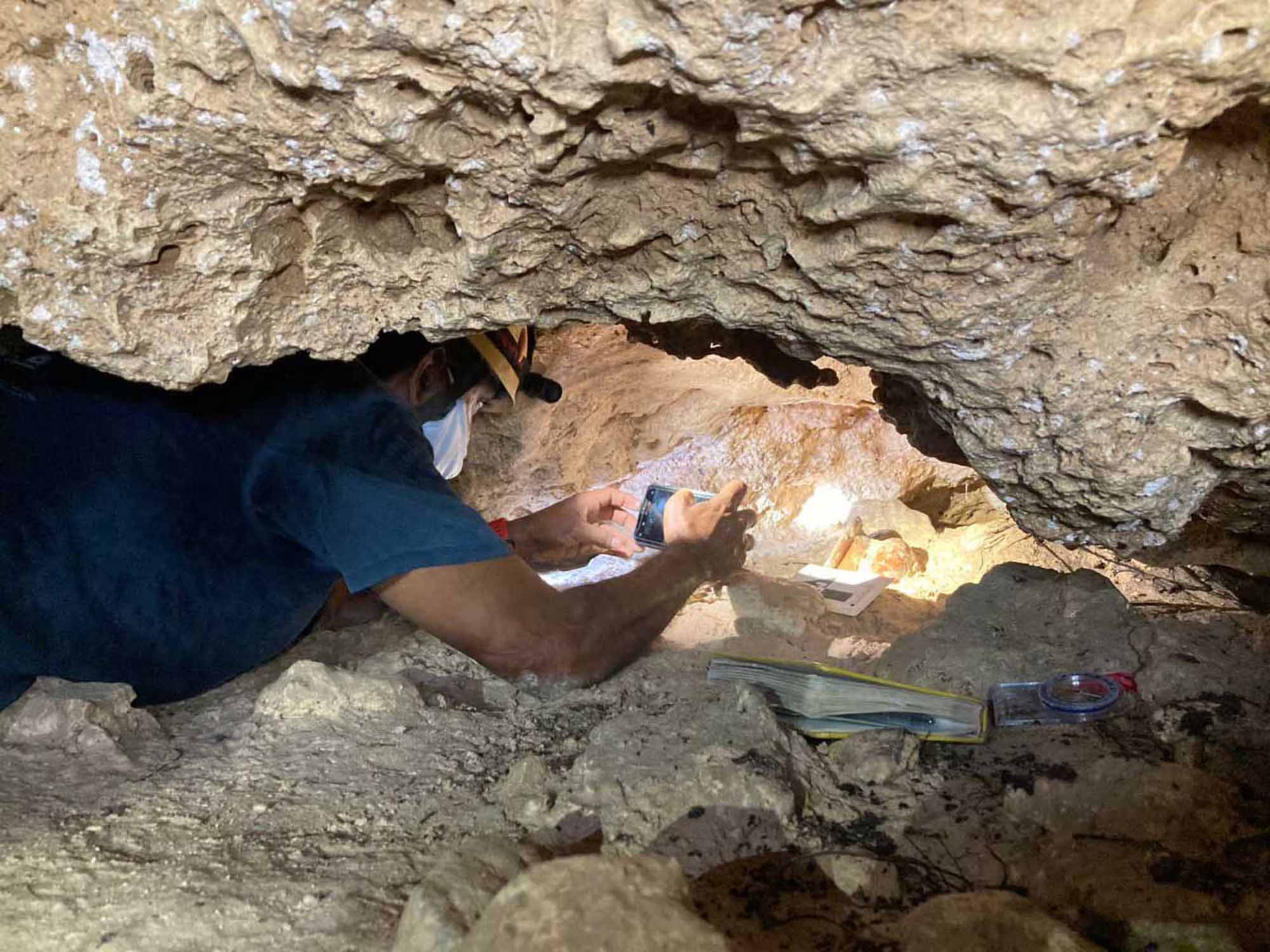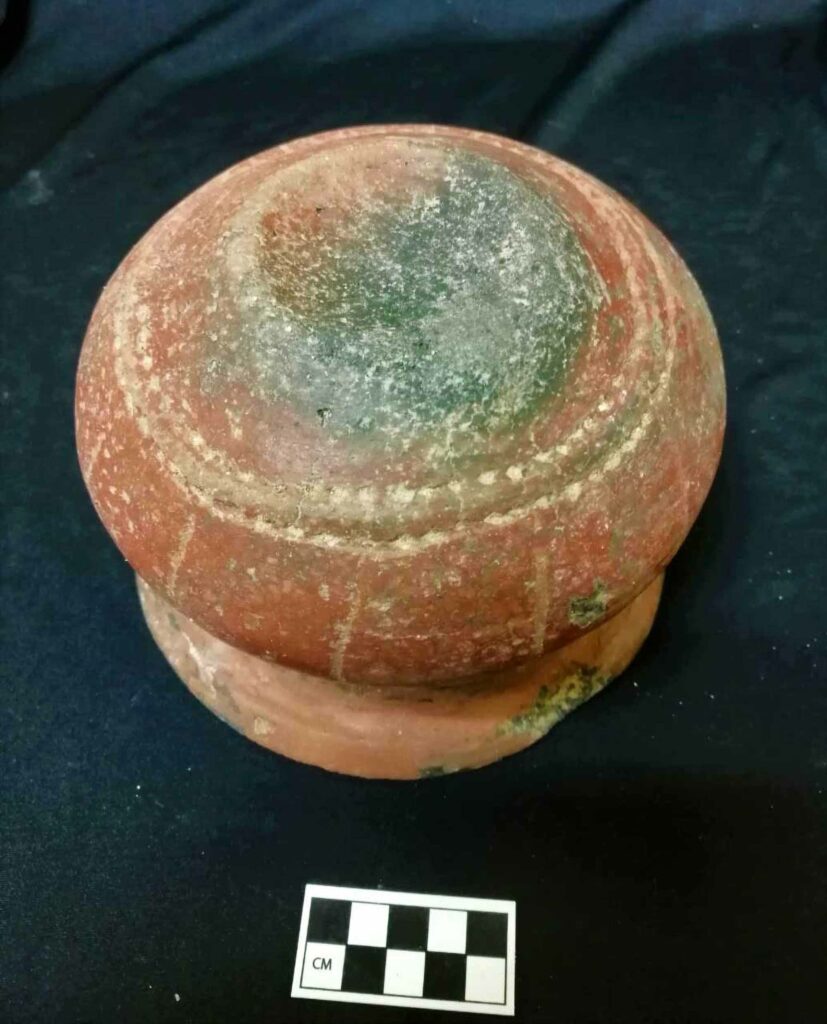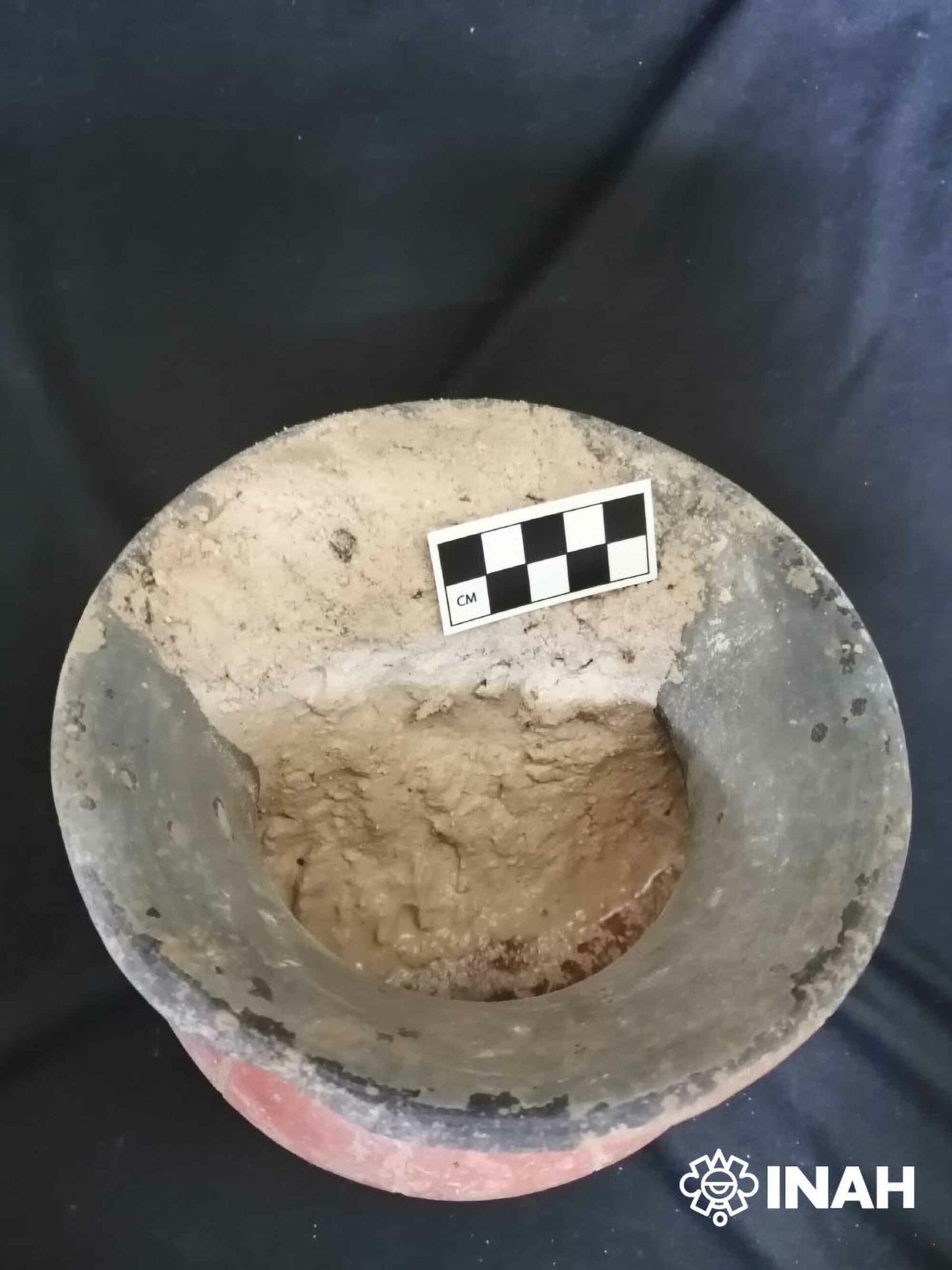An ancient Mayan chocolate pot thought to be 2,300 years old has been unearthed from a cave in Mexico.
The pumpkin-shaped pot had been hidden from view for centuries in a small cave which flooded regularly, covering the treasure.
Scientists unearthed the pot after studying earlier reports of visits to the cave, known as the Cave of the Cross.
The completely intact pot is said to date back to a period between 300 BC and 250 AD.
Jose Antonio Reyes Solis and Enrique Terrones Gonzalez, of the National Institute of Anthropology and History (INAH), found the item cave in the Mexican state of Quintana Roo.


The visit followed a report presented by biologist Roberto Rojo Garcia, head of the Urban Cenotes Project of Playa del Carmen.
INAH said in a statement on 19th July: “The natural formation, currently located in a green area and called Cueva de la Cruz, had already been mapped by speleologists from the aforementioned project who shared its plans with archaeologists.
“Antonio Reyes explained that the artefact was located near the eastern wall of the cave, partially submerged in soft sediment as water enters the cave and it tends to fill up in the rainy season.
“The head of Cultural Assets Protection of the INAH Quintana Roo Centre said the vessel was found intact and with its opening facing north, although it is suggested that this may not have been its original position and was shifted over time.
“Once a photographic record was made on site and the artefact’s planimetric information was gathered, it was removed during a meticulous process that even involved forming a human chain to extract it without damage as the small cave where it was found only allowed for the passage of one person.

“After being removed the surrounding area was searched to try to locate any associated element, however the space it occupied was immediately flooded by water that seeped from the ground, which prevented a detailed review in such a small environment.
“After these actions, the item was transferred to the collections archive of the Mayan Museum of Cancun where archaeologists were able to continue their research and define that the vessel measures 13 centimetres in height by 16 centimetres in diameter in its body and 17 centimetres in diameter at the opening.”
INAH added: “Although it lacks a spout-bridge handle, it has been associated with chocolate-type vessels, ceramic vessels associated with the Late Preclassic period (300 BC to 250 AD), so it is important for studying the early communities that populated the region of what is now Quintana Roo.”
Archaeologist Antonio Reyes said: “It has a reddish colour on the outside and is black on the inside, which is partially covered by calcium carbonates, something characteristic of materials recovered in caves. We have also observed that its decoration seems to be a phytomorphic image similar to a pumpkin.”
INAH said they will return to the cave in the dry season to continue their research and possibly discover other archaeological materials.
The institute added that they will monitor the entrance to the cave to prevent any unauthorised access while digs are ongoing.
Mayans thought chocolate was a drink of the gods and served the beans ground up with chilli and added to water.


To find out more about the author, editor or agency that supplied this story – please click below.
Story By: Lee Bullen, Sub-Editor: Marija Stojkoska, Agency: Newsflash
The Ananova page is created by and dedicated to professional, independent freelance journalists. It is a place for us to showcase our work. When our news is sold to our media partners, we will include the link here.




